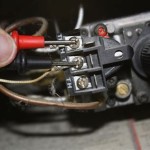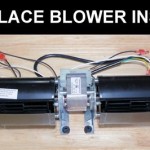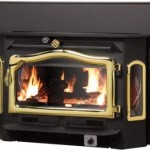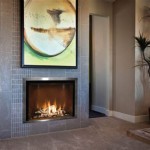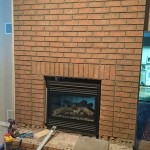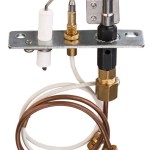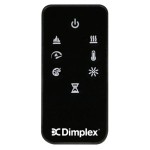Gas Fireplace Fan Kit: Achieving Quiet and Efficient Heating
Gas fireplaces offer a convenient and aesthetically pleasing alternative to traditional wood-burning fireplaces. They provide instant warmth and ambiance at the touch of a button. However, the heat generated by a gas fireplace often rises directly to the ceiling, leaving the lower parts of the room feeling cooler. A gas fireplace fan kit is designed to address this issue by circulating the heated air, resulting in a more even and comfortable temperature distribution throughout the space. This article will discuss the benefits of using a gas fireplace fan kit, focusing specifically on the importance of quiet operation and key considerations when selecting a suitable model.
A gas fireplace fan kit typically consists of one or more fans, a thermostatic control, and necessary wiring for installation. The fans are usually mounted beneath or behind the fireplace firebox, drawing cool air from the floor level and pushing it through the heating chamber. The heated air is then discharged back into the room, creating a convection current that spreads the warmth more efficiently. The thermostatic control ensures that the fan only operates when the fireplace is adequately heated, preventing it from blowing cold air when the fireplace is not in use.
Enhanced Heating Efficiency and Comfort
The primary benefit of a gas fireplace fan kit is improved heating efficiency. Without a fan, much of the heat produced by the fireplace is lost to the upper reaches of the room. This results in wasted energy and uneven temperature distribution, leading to discomfort and potentially higher heating bills. A fan kit actively circulates the air, ensuring that the heat is distributed more evenly throughout the room. This allows the thermostat to register a more accurate average temperature, leading to a reduction in overall heating costs. The increased air circulation also eliminates cold spots, creating a more comfortable environment for occupants.
Furthermore, a gas fireplace fan kit can effectively extend the heating radius of the fireplace. By pushing the heated air further into the room, the fan allows the fireplace to heat a larger area than it would otherwise be capable of. This is particularly useful in larger living spaces or for heating adjacent rooms. The enhanced heating efficiency also enables the fireplace to reach the desired temperature more quickly, reducing the amount of time it takes to warm up a cold room.
The distribution of heat is crucial for overall comfort. Without a fan, the area immediately surrounding the fireplace may become uncomfortably warm, while areas further away remain cool. A fan kit alleviates this issue by creating a balanced and consistent temperature profile throughout the room. This is especially beneficial for individuals who are sensitive to temperature fluctuations or who spend a significant amount of time in the room.
The Importance of Quiet Operation
While the benefits of a gas fireplace fan kit are undeniable, the noise level of the fan is a critical consideration. A noisy fan can be distracting and detract from the ambiance of the fireplace. A constant humming, buzzing, or whirring sound can be particularly irritating, especially in quiet environments. Therefore, selecting a fan kit that is specifically designed for quiet operation is essential for maximizing the enjoyment of the fireplace.
Several factors contribute to the noise level of a gas fireplace fan. These include the type of motor used, the design of the fan blades, and the overall construction of the fan unit. Motors that are known for their quiet operation, such as brushless DC motors, are often preferred in high-quality fan kits. These motors typically generate less noise and are more energy-efficient than traditional AC motors. The fan blades should be designed to minimize turbulence and air resistance, which reduces the amount of noise produced during operation. Well-balanced fans are also less likely to vibrate, further reducing noise.
The quality of the bearings used in the fan motor also plays a significant role in noise reduction. High-quality bearings provide smooth and quiet operation, while worn or damaged bearings can produce excessive noise. It is advisable to choose a fan kit that uses sealed bearings, as these are less likely to attract dust and debris, which can contribute to noise and premature wear. The materials used in the fan housing can also affect the noise level. Denser materials, such as steel or aluminum, can help to dampen vibrations and reduce noise transmission.
Manufacturers often specify the noise level of their fan kits in decibels (dB). A lower dB rating indicates a quieter fan. When selecting a fan kit, it is important to compare the dB ratings of different models. As a general guideline, a fan with a noise level of 30 dB or less is considered to be very quiet and unlikely to be noticeable during normal conversation. A fan with a noise level of 40 dB or more may be audible and potentially distracting.
Factors to Consider When Choosing a Quiet Gas Fireplace Fan Kit
When selecting a gas fireplace fan kit with a focus on quiet operation, several factors should be taken into account. First, the type of fan motor is crucial. Brushless DC motors are generally quieter and more efficient than AC motors. These motors also tend to have a longer lifespan, making them a more reliable choice. Second, the design of the fan blades should be optimized for airflow and noise reduction. Look for fan kits with blades that are designed to minimize turbulence and air resistance. Third, the quality of the bearings is important for smooth and quiet operation. Choose a fan kit with sealed bearings to prevent dust and debris from entering the motor. Fourth, the overall construction of the fan unit should be solid and well-damped to minimize vibrations and noise transmission.
The size and airflow capacity of the fan kit should also be considered. It is important to select a fan kit that is appropriately sized for the fireplace and the room it is intended to heat. A fan that is too small will not provide adequate airflow, while a fan that is too large may be excessively noisy. The airflow capacity of the fan is typically measured in cubic feet per minute (CFM). A higher CFM rating indicates that the fan can move more air. It is important to choose a fan kit with a CFM rating that is suitable for the size of the room and the heat output of the fireplace.
The thermostatic control is another important consideration. A well-designed thermostatic control will ensure that the fan only operates when the fireplace is hot enough to produce heated air. This prevents the fan from blowing cold air when the fireplace is first turned on or when it is cooling down. Some thermostatic controls also offer adjustable temperature settings, allowing users to customize the fan's operation to their preferences. A good thermostatic control can also contribute to energy efficiency by preventing the fan from running unnecessarily.
Finally, the ease of installation should be considered. Some gas fireplace fan kits are designed for easy DIY installation, while others may require professional installation. If one is planning to install the fan kit independently, it is important to choose a model that comes with clear and concise instructions. It is also important to ensure that the fan kit is compatible with the specific model of gas fireplace. Consult the fireplace manufacturer's instructions or contact a qualified technician for assistance if there are any doubts about compatibility or installation procedures.
In summary, a gas fireplace fan kit can significantly improve the efficiency and comfort of a gas fireplace by circulating the heated air and distributing it more evenly throughout the room. When selecting a fan kit, it is essential to prioritize quiet operation to avoid disrupting the ambiance of the fireplace. By considering factors such as the type of motor, the design of the fan blades, the quality of the bearings, and the overall construction of the fan unit, one can choose a gas fireplace fan kit that provides both efficient heating and quiet performance.

Fireplace Blower Fan Kit Quiet For Astria Lennox Superior Rotom Gas

Noisy Gas Fireplace Blower Here S How To Replace It Diy

Fireplace Blower Fan Kit Quiet For Astria Lennox Superior Rotom Gas

Fireplaceblowers Fireplace Blower Kit Accesories

Gfk160 Gfk160a Fireplace Blower Fan Kit For Heatnglo Heat And Glow Heatglo He

Why Do I Need A Blower Fan On My Fireplace We Love Fire

Fireplace Fan Stove Without Electricity Quiet Operation Temu United Kingdom

Gas Fireplace Blower Fan Installation

Fireplace Blowers Explained How Fans Work Regency

Fireplace Blower Fan Kit Quiet For Astria Lennox Superior Rotom Gas
Related Posts

